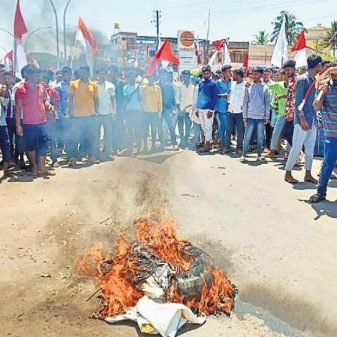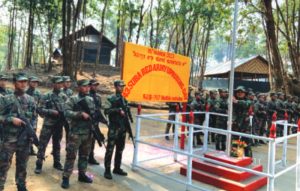
Education should empower the society to dispel gender stereotypes and as a result women’s education should become one of the main principles of modern education. Institutes like the National Council of Rural Education are the right apparatus to take steps to enhance the quality education for the weaker genders and weaker sections of society, especially in rural areas, which will in the process help bridging the rural-urban divide.
The main argument to defend this basic stand should be the simple minded philosophy that the nation simply cannot realize its full potential if half of its population is in a position, economically and academically, that it remains behind the four walls and does not contribute in a significant way to the development of the society. In return, they do not receive the correct exposure for fulfilling their personal ambition and realizing their career goals. What will be good to the society if half of its component does not make sufficient contribution? And what good is the education system if it does not concern itself about the present and future of the society.
Here, it will be pertinent to note the growth of women education in the state. The education of girls in Manipur, irrespective of the prominent social role played by women organisations and individuals, is relatively modern. Before 1947, education of girls was confined to those belonging to the royal families or members of well to do families. The first girls’ school was established in 1898 at Moirangkhom. By the 1940s, there were five girls’ schools including a high school, but the percentage of enrolment was only 0.61. Still now there are many problems afflicting girls’ education, including those relating to curricular, parental, financial and infrastructural.
But, if there is any study, it will be proven beyond doubt that there is coincidence between gender divide and rural-urban divide in dispensing the ultimate goal of modern education for all. In our state too, there is great disparity between girls’ education in rural and urban areas which will eventually reveal itself in the comparison between the different genders. Infrastructural problems are better to encounter than social and financial issues. Thus, in order to balance the skewed reality, the administration needs to build more schools in rural areas which have been one of the reasons for girls discontinuing their education. Moreover, there is a need for more all girls secondary schools and colleges, both in rural and urban areas, as our general belief seems to be built on the foundation, still in this modern times, that girls are better off in separate girls schools rather than co-educational schools.
Simple suggestions will list reservation for the weaker gender to enhance enrolment, scholarship and free text books and uniforms, in all schools including those in private sector, for lessening the financial burdens, strengthening libraries, correspondence courses, augmenting schools with hostel facilities, better sanitation facilities among others.
The World Bank has identified that female labour force participation in the market in India stands at 31.2 percent and says that a staggering 50 million young women in India neither study nor work. This data should be a proportionate if unfortunate reflection of the position of women in the state as well.





